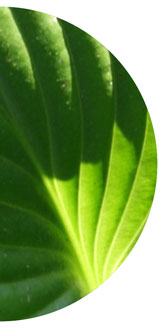“In this world, nothing is certain except death and taxes,” according to Benjamin Franklin. While we all have to face the latter on a regular basis, doctors deal with the former on a more frequent basis than the rest of the population. Most medical practitioners will, at some point during their career, be required to complete an official Notice of Death/Still Birth form in terms of the Births and Deaths Registration Act No. 51 of 1992. This form DHA-1663 is an important document recording and reporting the death of an individual. It contains information such as the name, age, date of death and cause of death. For this discussion, I will focus on the cause of death aspect.
Section B of the DHA-1663 form (“the form”) is titled the “Certificate by Attending Medical Practitioner/Professional Nurse”. Its purpose is to record whether or not a medical practitioner believes that the deceased died solely and exclusively as a result of natural causes. The person completing the form has the option of either certifying that the deceased “died solely and exclusively due to natural causes” (section B 22.1) or that he or she “is not in a position to certify that the deceased died exclusively due to natural causes” (section B 22.2). Rather ominously, the medical practitioner, when signing this portion of the certificate, agrees that, if the chosen option in paragraph 22 is not true, “I shall be guilty of an offence and on conviction liable to a fine or to imprisonment for a period not exceeding 5 years or to both.”
Section C of the DHA-1663 form deals with certificates issued after a medicolegal investigation of death, and is completed by a medical practitioner or forensic pathologist. A medicolegal investigation will need to be performed where, for example, the patient died during, or shortly after a surgical procedure, or where a practitioner has indicated in section B that (s)he is not in a position to certify that the deceased died exclusively due to natural causes. In the latter instance, whether or not the body was examined by the practitioner filling in section B may not be a contentious issue, given that the body will, in any event, be examined by the practitioner who completes section C of the form after a postmortem examination.
There is some uncertainty, and therefore a divide within the medical community, as to whether a medical practitioner is required to examine the body of a deceased patient after their death before recording whether or not the death was due to natural causes.
Not all scenarios are cut and dried. For example, you are a GP who has been treating an elderly patient at your practice for many years. Earlier in the week, the patient consulted you complaining of occasional chest pain. You performed various examinations and requested certain blood tests, but no particular explanation for the symptoms was noted. A few days later you receive a call from the patient’s daughter advising you that the patient has passed away, in bed, during the night. The daughter advises that the paramedics who were called to the scene suspected myocardial infarction as the cause of death. The daughter then requests that you complete the form. In such circumstances, do you need to examine the body before completing the Notice of Death?
Based on a reading of the DHA-1663 form itself, the answer to the above question appears to be yes. Section A of this form, which deals with the particulars of the deceased, states that this section “is to be filled out by authorised medical practitioner … who is responsible for examining the body to determine the cause of death” (my italics). Section B, which is the certificate stating whether the death was due to natural causes, in turn, states that this section is “to be filled out by the same medical practitioner … who completed section A”. Finally, section G, which is the medical certificate of cause of death, requires completion by the medical practitioner who has determined the cause of death (i.e. the practitioner who filled out section B or C). From the aforementioned, it appears that a medical practitioner is expected to examine a body before completing a Notice of Death form. This seems to be a logical position to take, given that it is arguably not possible for a medical practitioner to assess whether a death was due to natural causes without personally having examined the body for defensive wounds or any other signs of possible foul play. But why, then, does there seem to be uncertainty in the medical community?
The answer to this question lies in not only the enabling legislation, the Births and Deaths Registration Act No. 51 of 1992 (“the Act”) and its regulations, but also, to some extent, in the form itself. Section 15(1) of the Act, as mentioned, states that “where a medical practitioner is satisfied that the death of any person who was attended to before his death by the medical practitioner was due to natural causes, he shall issue a prescribed certificate stating the cause of death”. Section 15(2) states that “a medical practitioner who did not attend any person before his death but after the death of the person examined the corpse and is satisfied that the death was due to natural causes, may issue a prescribed certificate.” Regulation 21(1)(a) of the regulations on the Registration of Births and Deaths (26 February 2014) states that a “notice of death must be given within 72 hours of the death by the informant – (a) on form DHA-1663 … where the cause of death certificate [section G of form DHA-1663] contemplated in section 15(1) or (2) of the Act was issued by a medical practitioner” (my insertion).
The first point to note is that section 15(1) does not mention a requirement of examination, while section 15(2) does. It would appear from this that the legislator envisioned two situations: one in which a practitioner who had had previous dealings with the patient was not required to examine the body, and one in which a practitioner who did not know the deceased was required to do so. On this interpretation of section 15(1), provided the medical practitioner had attended to the person at some stage before their death and was satisfied that this was a result of natural causes, a certificate (section G of the form) could be completed without the practitioner having examined the deceased’s body after death. Finally, to add to the uncertainty, section G.1 of the form specifically asks what method was used to ascertain the cause of death, and provides various options from which to choose. Two of these stated options include the opinion of the attending medical practitioner, and an interview with a family member. Not only is the requirement of examination not specified for either, but the options presented (including that of interviewing a family member), taken together, could be interpreted to mean that the body need not be personally examined by the certifying practitioner after the deceased’s death.
The above presents some difficulties, the first of which is found in section A of the DHA-1663 form. This section, which is titled “Particulars of the deceased”, must be completed by the medical practitioner “who is responsible for examining the body to determine the cause of death”. This appears to contradict both section 15(1) of the Act and section G of the form. Section 15(1) requires that a practitioner must be “satisfied” that the death was due to natural causes. This is a subjective requirement and it may be difficult to determine, at the time, what is satisfactory in each situation. For example, based on the scenario above, can a practitioner be satisfied by having been informed of the paramedics’ opinion by the deceased’s daughter, coupled with his/her having seen the deceased 1 week before death? Again, section G of the form makes provision for a determination of death by various methods, not all including actual examination.
Based on the above, an argument can be made that a death notice can be completed without the practitioner concerned having examined the body (given that the Act seems to provide for this eventuality). However, it is far wiser for a practitioner rather to examine the body of a deceased person, regardless of whether (s)he has recently consulted with them or not. If a particular practitioner cannot examine the body, (s)he should approach a colleague to do so on his/her behalf.
Finally, practitioners must bear in mind that they may be called upon to substantiate their finding that death was brought about by natural causes. It is therefore important to document the basis and reasons for such a finding.
This article was published in the August issue of the SAMA Insider Magazine on page 21.

